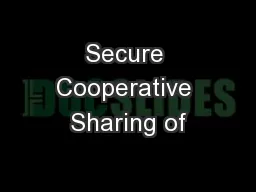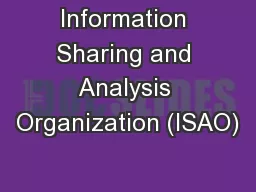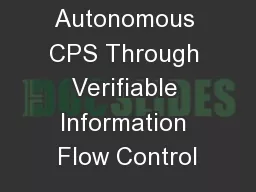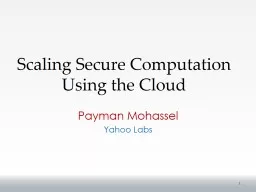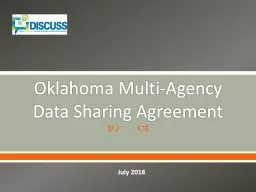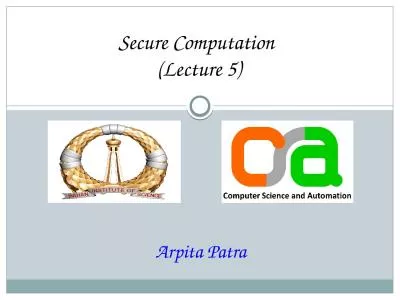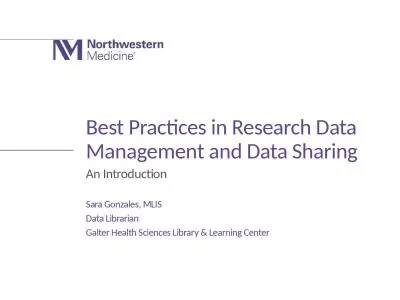PPT-Secure Information Sharing Using
Author : jane-oiler | Published Date : 2016-02-29
Attribute Certificates and Role Based Access Control Ganesh Godavari C Edward Chow 06222005 University of Colorado at Colorado Springs International Conference
Presentation Embed Code
Download Presentation
Download Presentation The PPT/PDF document "Secure Information Sharing Using" is the property of its rightful owner. Permission is granted to download and print the materials on this website for personal, non-commercial use only, and to display it on your personal computer provided you do not modify the materials and that you retain all copyright notices contained in the materials. By downloading content from our website, you accept the terms of this agreement.
Secure Information Sharing Using: Transcript
Download Rules Of Document
"Secure Information Sharing Using"The content belongs to its owner. You may download and print it for personal use, without modification, and keep all copyright notices. By downloading, you agree to these terms.
Related Documents







